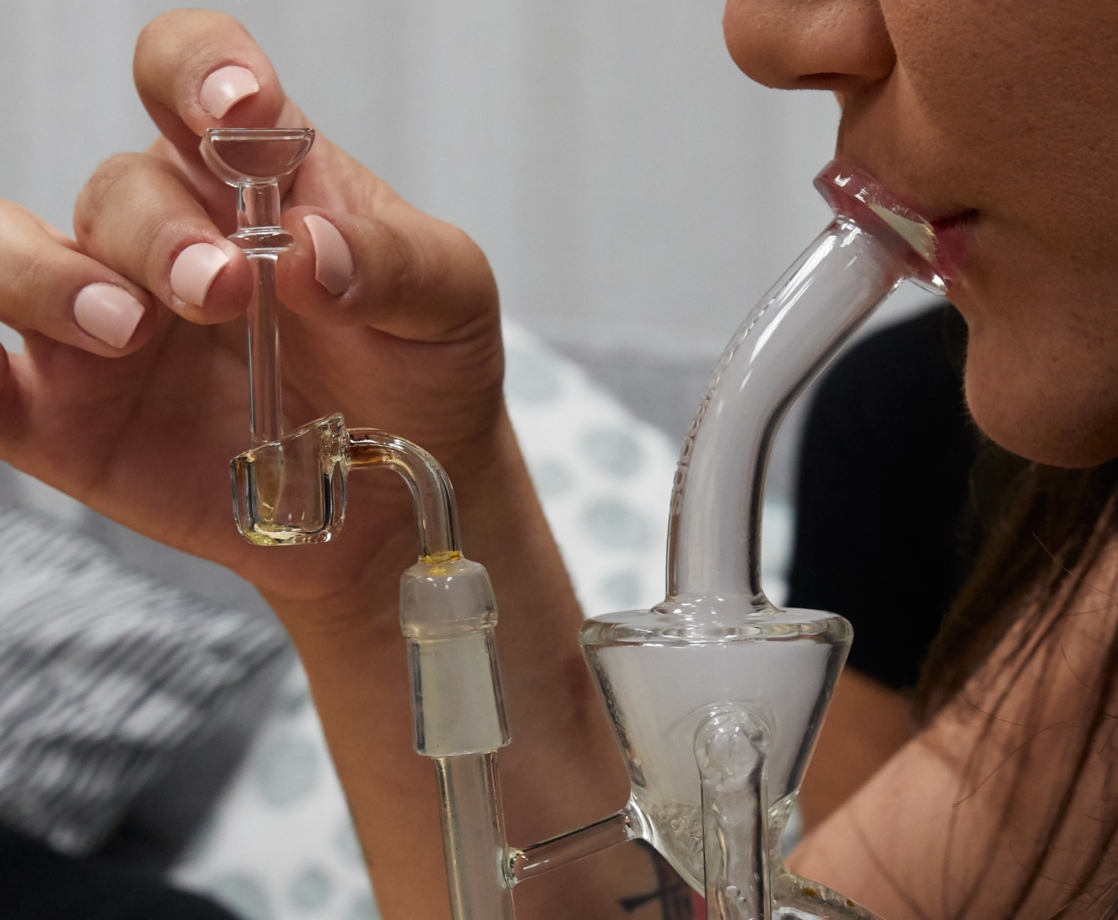A new study by Portland State University (PSU) has found that terpenes or other compounds commonly added to cannabis distillates can release toxins when vaped or dabbed, potentially increasing users’ risk of cancer.
Researchers from PSU studied the chemical reaction that occurs when cannabis is consumed using a vape pen or a dab rig. To conduct the experiment, researchers sourced analytical-grade THC from Michigan and a cannabis terpene blend from California, and made their own distillates. These compounds were tested using both a vape pen and a homemade dab rig.
The lab then examined the resulting vapor’s chemical composition, and discovered a number of potential toxins, including isoprene, methacrolein, benzene, and methyl vinyl ketone. The study notes that “several identified components are International Agency for Research on Cancer-classified carcinogens, and exposure to these may place a burden on the health of people that use dabbing or vaping to consume cannabis.”
The primary source of these toxins was not pure THC, though. The vaporization of terpenes, cannabis compounds that are responsible for the smell and flavor of weed, created higher levels of these toxins than THC alone. Terpenes naturally occur within the cannabis plant, but at relatively low levels. Weed producers often add up to 30 percent more terpenes to their concentrates in order to boost the smell or flavor.
“There are fewer toxins formed from THC as compared to terpenes,” said PSU chemistry professor Rob Strongin, co-author of the study, in a statement. “This is consistent with some of the vaping-related injuries we’re seeing. It’s not the active ingredients, like THC or nicotine, that appear to be causing the hospitalizations and deaths, but what they are combined with.
Strongin explained that researchers have never looked at how additives like Vitamin E acetate or other thickening agents, which could be responsible for the recent outbreak of vaping-related lung illnesses, might affect the lungs. “There’s a reason that no one studied the inhalation toxicity of a lot of the ingredients in e-cigarettes because nobody thought we’d be crazy enough to be inhaling them,” he said. “But the problem now is that there’s a huge gap in our knowledge.”
Although these results are concerning, the study found that vaping or dabbing is still less risky than smoking it. “Results indicate that vaping or dabbing distillates has lower HI (Hazard Index) and ELCR (Elevated Lifetime Cancer Risk) than those of cannabis smoking by several orders of magnitude,” the study said. “These findings are not definitive and must be interpreted with caution as they are only a first step toward determining the overall safety of these cannabis inhalation methods.”
“The development of novel cannabis inhalation products has outpaced both basic and applied biomedical research,” the study authors concluded. “This has hindered the ability of regulatory agencies from properly informing the public about the safety of these products and their routes of administration.”
The researchers intend to conduct additional studies to identify other potential toxins, like formaldehyde and carbon monoxide, that could pose a risk to respiratory health.











